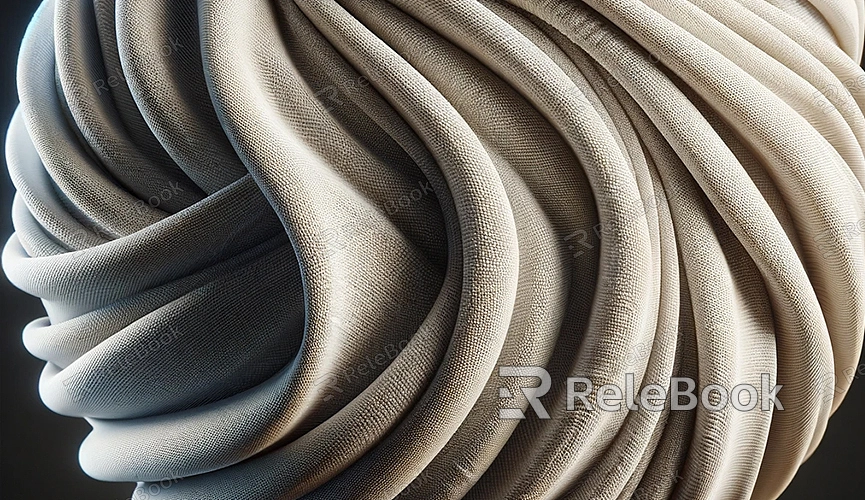Application of Fabric Material Texture
Fabric material texture finds extensive applications in 3D design and 3D scene rendering. It is primarily used to simulate or depict the appearance and texture of different types of fabric surfaces for 3D model rendering and scene rendering. This fabric material texture encompasses patterns, textures, details, and textures of various fabric types such as cotton, wool, silk, and linen. Different types yield different rendering effects. Today, let's delve into the ways fabric material texture is commonly employed.

1. Choosing the Appropriate Fabric Material: In the project, select fabric materials that align with the design theme, such as silk, cotton, wool, and other different fiber materials.
2. Preparing the 3D Scene: Set up your scene in Blender or other 3D modeling software, ensuring scene elements harmonize with the chosen fabric material.
3. Importing Fabric Material Texture: Import the selected fabric material texture into the project, ensuring image quality and resolution meet design requirements.
4. Adjusting UV Mapping: Fine-tune UV mapping on scene elements to ensure accurate mapping of the fabric material to different parts.
5. Rendering and Lighting Effects: Adjust lighting effects in rendering settings and observe how the fabric material performs under different lighting conditions.
6. Adding Details and Texture: Use image editing software to add details to the fabric, such as texture and glossiness, making it more vivid.
7. Real-time Preview: In 3D modeling software, preview the fabric material texture effects in real-time, making adjustments to ensure harmony with the overall scene.
Common Applications of Fabric Material Texture Rendering Effects:
1. High-End Fashion Design: Use silk fabric material to bring a unique texture and luxurious glossiness to high-end fashion designs, highlighting the designer's taste.
2. Interior Decor Sofas: Employ soft velvet fabric texture to design sofas for interior decor, providing a comfortable touch and enhancing the warmth of the home.
3. Outdoor Umbrellas: Apply waterproof polyester fabric material to provide wind-resistant and waterproof functionality for outdoor umbrellas, increasing longevity.
4. Car Seat Design: Use advanced synthetic fiber fabric material to design fashionable and durable seat fabrics for car seats, enhancing the driving experience.
5. Restaurant Chair Cushions: Apply cotton-linen blend material to design fresh and natural textures for restaurant chair cushions, creating a relaxed dining atmosphere.
6. Athletic Shoe Design: Use breathable mesh fiber material to design athletic shoes with a comfortable and breathable appearance, improving the sports experience.
7. Sturdy Office Chairs: Utilize high-quality leather material to design classic and atmospheric appearances for office chairs, highlighting the professionalism of executives.
8. Outdoor Café Seating: Apply UV-resistant nylon material to design outdoor café seating with a durable and easy-to-clean appearance.
By applying fabric material texture to 3D models, we can simulate various fabric effects in furniture, clothing, scene design, and more. Such textures are valuable for adding detail, improving visual effects, and enhancing realism. If you need high-quality 3D textures and HDRI or 3D model downloads, you can find them on Relebook. Simply download and import the textures and 3D models directly into your project.

